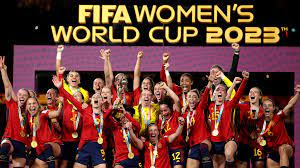April 25 – FIFA has launched broadcast and media sales for the 2027 FIFA Women’s World Cup in Brazil across the big paying European territories and Central Asian territories.
The launch of the invitation to tender (ITT) comes two years before the finals, the first time they have been held in South America. The tender follows hard on the heels of FIFA drawing a blank with broadcast sales in major European territories for its expanded Club World Cup in the US this summer.
Most of Europe’s biggest broadcasters declined the rights with FIFA in the end licensing to streaming service DAZN who in turn are sub-licensing in individual territories with deals still being concluded with less than two months to go before the tournament kicks-off in the US.
For the Women’s World Cup in 2023 in Australia, FIFA was also late in going to market, but also massively inflated its rights fee demands. With European broadcasters baulking at the high price and the short timescale to budget any acquisition, FIFA president Gianni Infantino entered the fray accusing the European of misogyny and attempting to shame them into the rights buy.
It didn’t work, but eventually a deal was struck with the European Broadcast Union (EBU) that enabled the finals to be seen on major networks.
For 2027 FIFA has more time to build its sales effort and will certainly have a warmer welcome after the success of the 2023 tournament that was expanded to 32 nations for the first time. Cumulative broadcast and digital audiences surpassed two billion.
The submission deadline for bids is Tuesday 3 June 2025.
According to analysis by research firm Omdia, the FIFA Women’s World Cup generated between $70 million and $100 million in media rights revenue, making it the most valuable women’s sporting competition globally at the time. The data underscored football’s dominance within women’s sport — with seven of the top 11 most valuable competitions being women’s football leagues or tournaments.
The 2027 tournament will again feature 32 nations, with UEFA allocated 11 direct slots and the possibility of a 12th via the play-off tournament.
Through media rights revenues, FIFA funds a range of women’s football development programmes. Since 2021, 167 member associations have benefited from over 1,000 initiatives, including support for female coaches and executive education.
Contact the writer of this story, Harry Ewing, at moc.l1745603732labto1745603732ofdlr1745603732owedi1745603732sni@g1745603732niwe.1745603732yrrah1745603732

